Lively Review
An Affordable Medical Alert Device Compatible With Your Smartphone
SafeHome.org may receive compensation from some providers listed on this page. Learn More
We may receive compensation from some providers listed on this page. Learn More
An Affordable Medical Alert Device Compatible With Your Smartphone
Did You Know? Lively was formerly known as GreatCall. However, in May of 2021, the company rebranded its name and products to Lively.
Whether it is socializing through bridge club, golf, and luncheons, or venturing as far as the backyard garden, we know that getting out of the house and staying active is important to many older adults. Lively recognizes this and has designed all four of their medical alert devices with these on-the-go older adults in mind.
While these devices are mobile, they can be used in the home as well. However, unlike most at-home or hybrid systems, the Lively products do not involve a base unit that gets plugged into a central location or wall buttons. Rather, Lively consists of a single, streamlined device.
We spent several days living with the Lively Wearable2, a contemporary-looking watch that paired with our smartphone. With the majority of adults over the age of 60 using them, it seems logical to offer a mobile system that utilizes smartphones.
Unfortunately, shortly after we conducted our tests, Lively discontinued its Wearable line, including the Wearable2. But don’t worry; reading this review will give you an idea on how Lively works, and later on, we’ll discuss the currently available options you can choose from. You can also check our list of the best medical alert smartwatches if a smartwatch is what you’re after.
FYI: We really liked the look of our new Lively “watch” alert system — it’s black and the size and shape of an Apple Smartwatch.
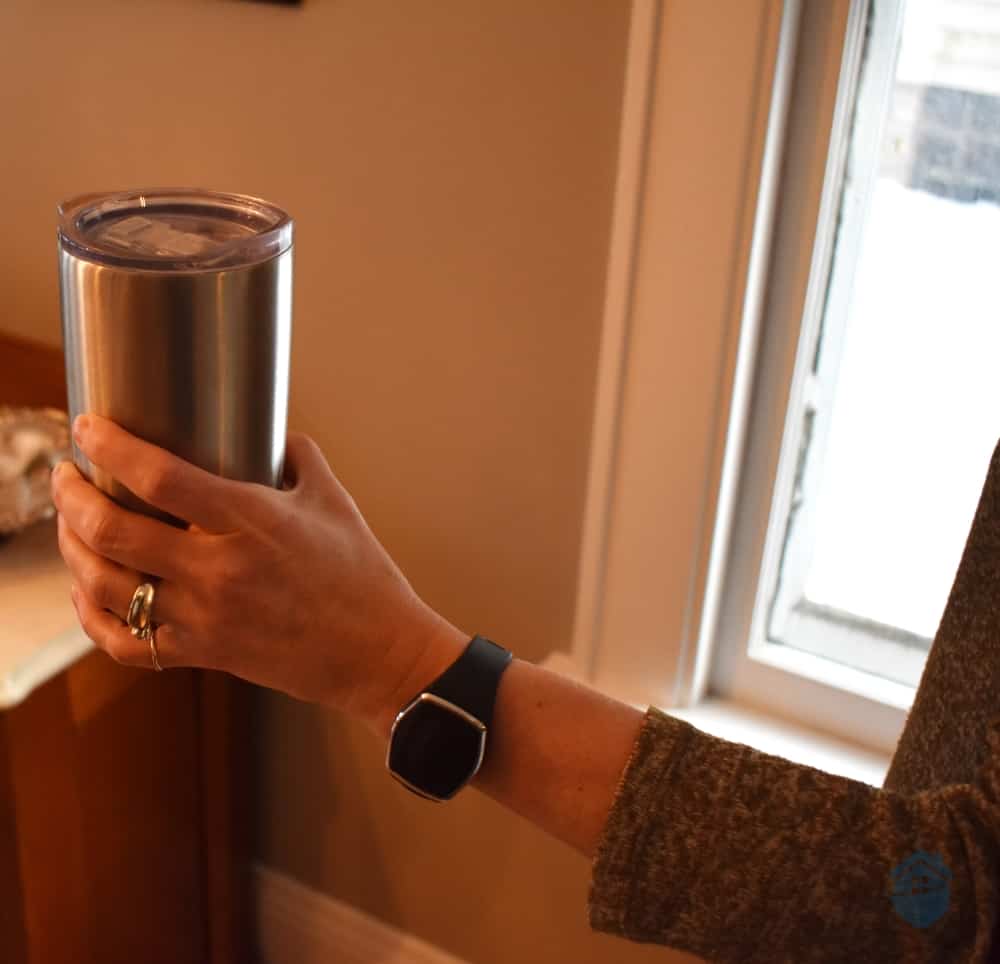
Wearing Lively
We were curious about the fact that the smartwatch had a single button, and this single button could perform just a single function, albeit the most important one — connecting with Lively’s 5Star Urgent Response Service. Other watches that we’ve tested offer multiple functions, including displaying the time.
The system does offer several other features, but they are accessed through your smartphone rather than the device itself (pretty neat, actually). Now, that is one other caveat of the Wearable2 – the user must have a smartphone, and it must always be within a certain range from them or ideally, on them. While teenagers are known to have their smartphones with them all the time, we can’t say the same for many seniors, which is why we have reservations as to if this can actually work.
Over the next few days we would sort this all out as we tested the functionality and response time of our Lively Wearable2. So keep reading for our full review.
Pro Tip: In order to use the Lively Wearable2, you will need to have either an Android 7.0 or iPhone iOS 11 or later. Not sure what you have? Lively’s customer service can help. Be sure to call them from the smartphone you will be using with the Lively Wearable2.
Check out more recommendations from the SafeHome team:
Tilly, our goldendoodle, barks frantically at around the same time every afternoon, alerting us that the mail has arrived. On this particular day, we picked up our bills and whatnot that had dropped through our mail slot as Tilly found the treat left behind by the mail carrier. Behind the front door, we also found our medical alert system.
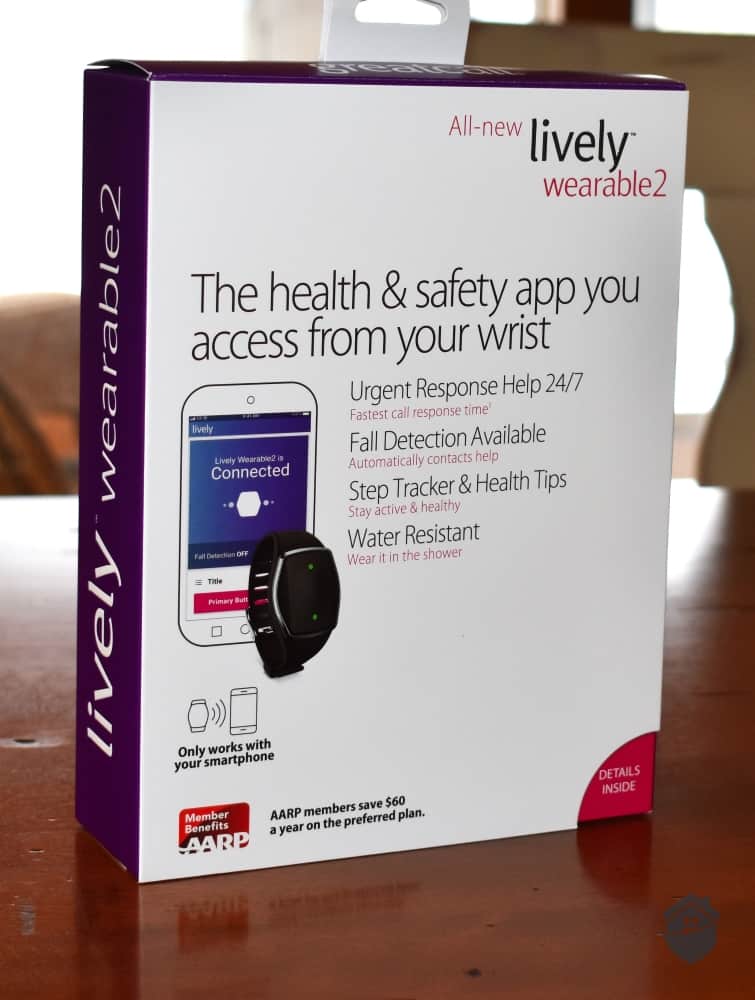
Lively Box
Inside the small box, we found a few small, black items: the emergency help button, the watchband that encases it, an optional lanyard, and a replacement battery. All seemed relatively simple so far.
We pulled out one final item — the Quick-Start Guide. The size of an index card, the guide communicated simplicity and ease of use.
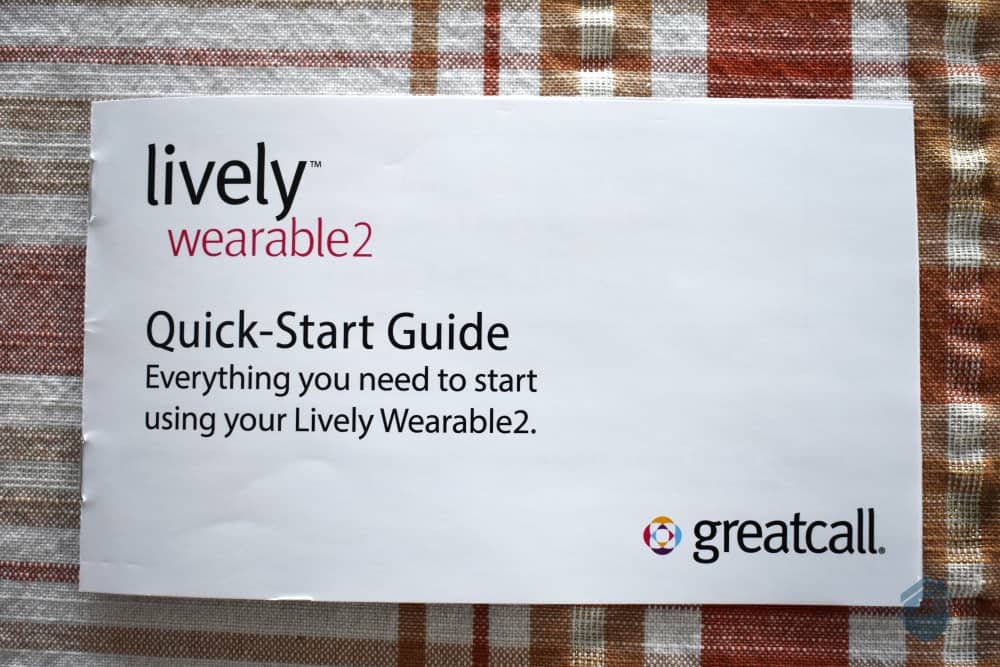
Lively – Starting Guide
The first thing we read as we opened the guide was a red box marked with the headline “IMPORTANT.” It directed us to contact Lively’s “friendly activation specialists” before doing anything else. We would agree, our specialist, Cindy, was very friendly!
Cindy provided directions to download Lively’s app, called Lively App, which works in conjunction with the Lively Wearable2. We liked the way Lively handled setup. Rather than overwhelming customers with written information concerning downloading the app, they kept the quick guide simple and manageable.
Did You Know? At times we get frustrated with technology and you might too. Lively knows this, so they have provided a live person to walk you through the process. Some medical alert companies might provide an extra “activation” fee for this service. We liked that with Lively, both the app and the activation assistance is free.
Keep in mind that some older adults may need assistance with downloading this app, so we would recommend that a caregiver or family member be available to assist at this particular stage of the process.
With that said, the voice-activated system does ease you through the steps, which include answering “yes” to enabling the system to access your location and adding the 5Star Urgent Response Service to your list of contacts. The final command asks you to allow the Lively App to use Bluetooth to pair the app to your smartphone.
After following through with this relatively short process, we were ready for our first test call.
The Lively Wearable2 works a bit differently than some other systems we have tried. Read on as we provide you with the big picture.
Our first test of the system went smoothly. Wearing the device as a
wristwatch, we pressed the single black button in its center. We noticed the two tiny indicator lights blinked green. An Urgent Response Service agent quickly connected with us. We simply told him we were testing the system, and that was about it. The response time for this first call was 17 seconds. Wow! In the medical alert world, that’s fast.
Here’s a short video we made that shows you exactly what to expect with Lively’s response time:
In ensuing days we would test the system several more times, each time resulting in a response time under 19 seconds. Once, an agent even picked up 14 seconds after we had pressed the button, which breaks our own personal response time testing record. A notable response time tops the lists of Lively’s benefits.
What we realized was different about this initial test call was that we spoke to the associate not through a two-way talk on the device itself but through the phone. There were no issues with this call, but it got us thinking: in order to even initiate a call to the response center, we needed to be in close proximity to the phone, the Quick-Start Guide told us. However, the Quick-Start Guide did not tell us how close we needed to be. Sounded like we needed to do some more testing.
Since your smartphone is needed in close proximity when pressing the help button, you may be wondering why the watch is needed at all. We sure did.
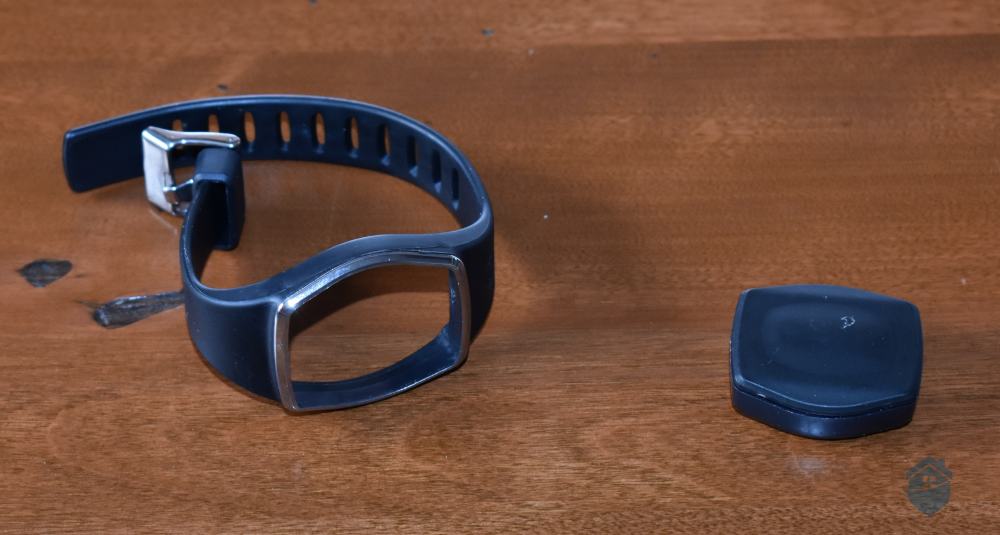
Lively Watch
And we have a few observations to share. Neither the Lively website nor the Quick-Start Guide indicates what the range of the device should be to your cell phone. This is important information, so we called customer service to ask. We learned that the range is 150 feet — almost the width of a football field or about three times as long as a semitrailer.
FYI: Aaron Rodgers, quarterback for the New York Jets, may have a house the size of a football field’s width, but we do not — not even close! So the range shouldn’t be a problem.
Now, we have doubts about this promised range. 150 feet sure sounds good, but we also know, having been in the tech industry for a while, that Bluetooth devices aren’t very good with range. In fact, a typical Bluetooth device (like a Bluetooth headset, for example) has a connection range of about 100 feet. Even at that, walls and large appliances can impede Bluetooth signals.
But let’s give Lively the benefit of the doubt and see if we could convert this number to our home space to make sense of it. We decided to consider the following fictional scenario:
One morning “Maria” dresses for the day in her bedroom. She begins to feel faint and nauseous. Maria has left her smartphone in the kitchen next to the coffeemaker, but she is wearing the Lively Alert2 on her wrist, so she presses the help button. The watch is within range of Maria’s phone. She is unable to speak to a Response Center associate, but Lively receives the help call and sends emergency services to her home.
Has the system worked effectively? If Maria has developed a serious medical situation, yes, she receives the help she needs. If Maria’s symptoms subside and she wishes to cancel the emergency call, she will be unable to do so without her phone available. That’s another caveat with the Wearable2. Although you can use it to contact emergency response, it won’t let you communicate. And we all know that in medical emergency situations, communication is important.
When away from home, Maria is likely to take her phone with her. Perhaps she keeps it in her purse or places it next to her in the car. The absence of two-way talk on the device itself may be less of an issue while on the go because the phone is likely within arm’s reach. Unless you are someone who frequently forgets to bring your phone with you!
Pro Tip: If finding a wearable device that includes two-way talk is important to you, you may want to read our review of LifeFone. We found LifeFone’s On-the-Go and At-Home device to be lightweight and highly functional.
The importance of having two-way talk on a wearable, especially for the home environment, may be something you need to weigh with other unique features that the system offers. Let’s talk about some of those features next.
While the watch itself features the single function of contacting the Response Center, the app with which it is paired contains several more. Now, this is important. The Wearable2 may have been discontinued, but Lively continues to offer the Lively App. So the features you see here are still available.
This includes features for preventive health care, such as a step tracker and daily health tips. (E.g., “Our tip today: increase fiber intake by eating beans [legumes], whole-grain products, fruits, and vegetables.”)
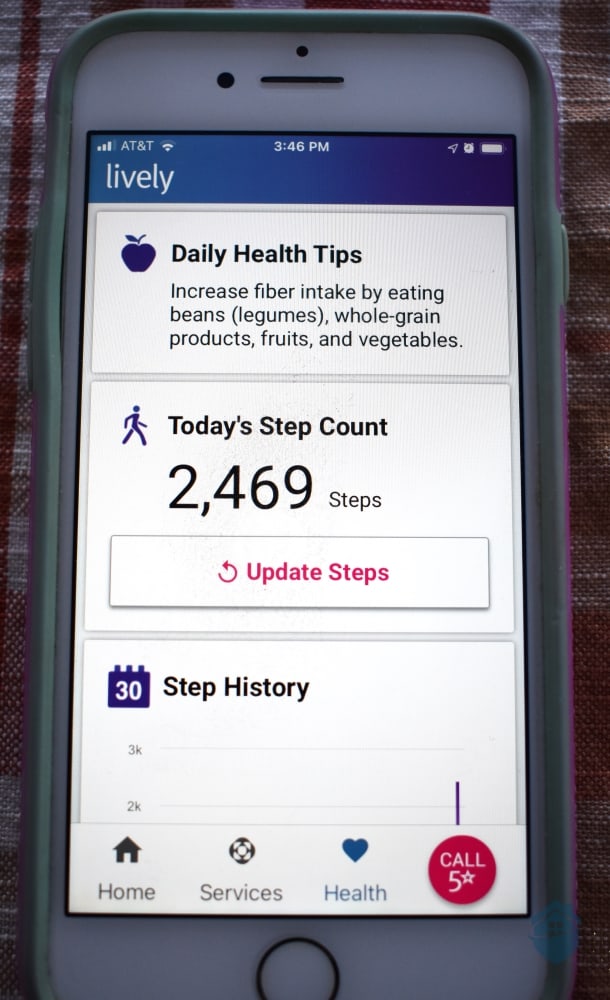
Lively App Dashboard
We mentioned in our introduction that Lively’s add-ons are services rather than “things” or products. Take a closer look at these valuable features.
This is a free app for caregivers and other family members. It sends you emergency alerts, provides location detection to caregivers, communicates the device’s status, including whether the device is on or left at home. It also indicates when the battery is low and informs caregivers about activity information such as if appointments are being kept or if there has been a change in activity.
Did You Know? In 2020, 50 million Americans provided unpaid care to another adult. This is nearly one in five.1 As this number continues to increase, companies like Lively become more innovative with the caregiving features that they offer.
We rarely see this feature. Through this service, which is included with Lively Alert2’s monthly charge, you can speak to a registered nurse or doctor anytime, without an appointment. You can also get prescriptions and refills. An insurance plan or co-pay are not necessary. Although we have not witnessed this service in action, it could be of great benefit to older adults. However — and this is important — this service is only available with the Preferred and Ultimate packages (explained in detail below).
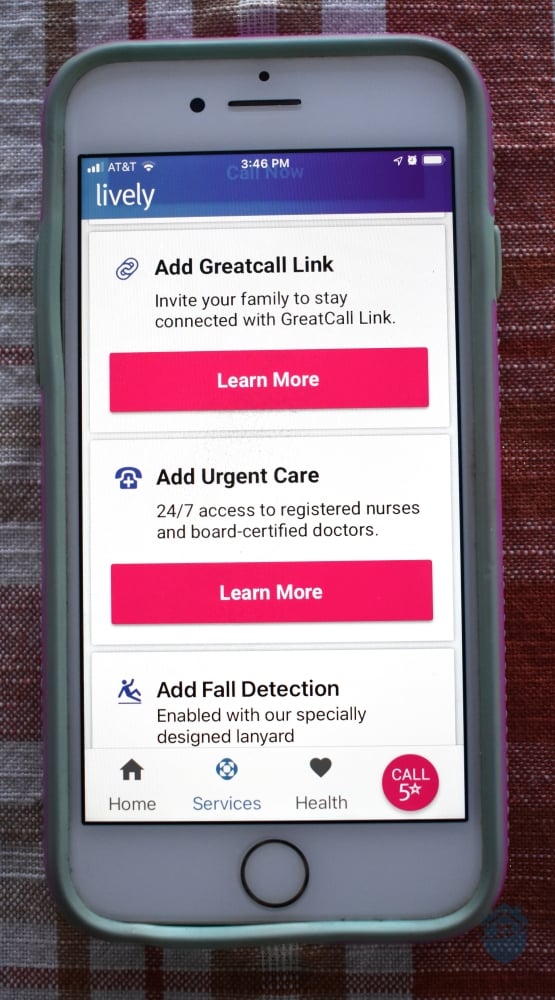
Lively App
We love medical alert systems that include helpful features for caregivers. For a look at another system that does a great job of this, read our review of Aloe Care Health.
Fall detection is another feature offered through the Lively Alert2 (Ultimate package only).
Falls among older adults are more common than many realize and can result in injury or even death. In less severe cases, slips and falls can still become a barrier to a person’s independence. Particularly dangerous is “the long lie,” a situation in which a person is unable to get up or call for help, resulting in the person lying on the ground for hours. The longer a person lies on the ground, the greater the complications to physical and emotional health that can occur. One study found that 30 percent of the incidences of older adults falling result in “long lies.”2
Because of the danger of falls, we believe that fall detection is something that older adults should include with their medical alert systems. With most systems, this feature is an add-on, usually costing between $5 and $10 per month. Similarly, Lively offers it only through the Ultimate package, which is $10 more expensive than the mid-range Preferred package.
Pro Tip: If transporting your Lively device in a purse or suitcase, be sure to turn off the fall detection feature. You can do this through the Lively App on your smartphone.
Fall detection is somewhat complicated with the Lively Wearable2 because of the device’s very nature. Many older adults choose a mobile alert device that can be worn on the wrist because they are less stigmatizing. As one health expert put it, the medical alert as a watch is a medical alert “makeover.” These devices are designed to look similar to Apple’s Smartwatch, and as such, convey an image of an individual who is tech-savvy, contemporary, and stylish. In short, medical alert “watches” do not look like medical devices.
However, the dilemma is that fall detection cannot be used on the Lively Wearable2 when it is worn on the wrist. In fact, fall detection becomes disabled. Lively is not alone in offering fall detection only with a lanyard. Most medical alert companies agree that fall detection is less effective on the wrist than it is when worn on a lanyard.
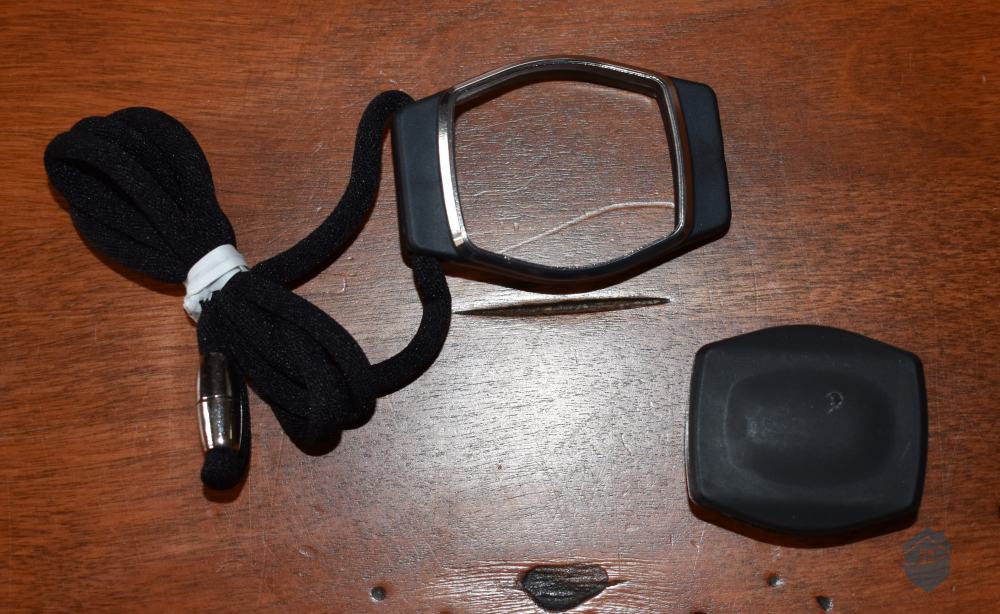
Lively Necklace
It is the reason that this watch-based system includes a lanyard (pictured above). The question then becomes: will you or your loved one actually wear the lanyard? Further, in order for fall detection to work effectively, it needs to be turned on all of the time. Obviously, no one can predict if or when they are going to fall. Yet, why purchase a watch if it needs to be worn as a lanyard for full protection?
Of course, every person and family needs to consider daily habits and what will work best for their situation.
We do recommend, if you or your loved one is at high-risk of falling, that you consider Lively’s all-in-one device, the Lively Mobile Plus, which includes fall detection and two-way talk.
Or for a similar system, check out our review of Lifeline. Both their at-home and mobile systems offer fall detection. And here is another of our resources that you can refer to as you shop for a device with fall detection: Best Medical Alerts with Fall Detection.
Another difference in Lively’s approach is with batteries. While most medical alert companies supply a rechargeable battery, Lively provides its Wearable Alert2 with a non-rechargeable battery pre-installed in the watch as well as includes one replacement battery.
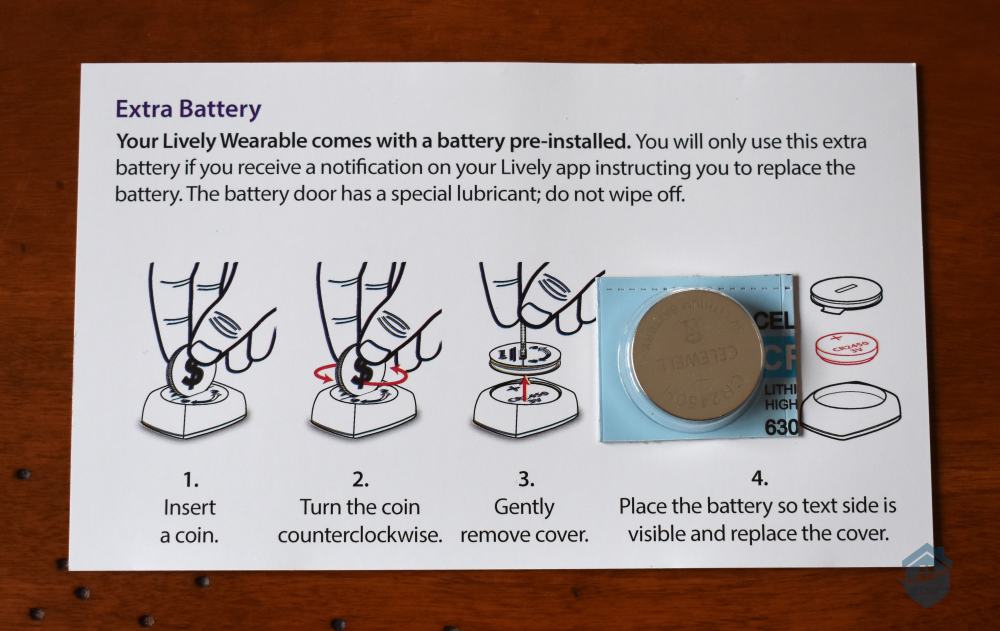
Lively – Extra Watch Battery
Because this device will be used frequently, and in some cases, a person’s life may even depend on it, working batteries are a big deal. So which type of battery makes more sense?
Let’s start with cost. The batteries that Lively supplies (CR2450) last up to four months, so between the two batteries, you will get up to eight months of battery power before needing to buy a replacement yourself. We did a quick check on Amazon to find the cost of a replacement — $3.25 for a single battery or $8.95 for a 20-pack. Seems reasonable!
On the other hand, replacing batteries can be a hassle. Our junk drawer is full of them — but we can never find the one we need RIGHT NOW.
You may prefer a product that has a rechargeable battery so that you don’t need to bother with going out and buying a new one when the old one dies (or digging desperately through your junk drawer). So this is something to consider.
The other thing we will warn you about is what should be an easy task — removing and replacing the lid to the battery case — was somewhat challenging for us. We’ve seen better designs. This task will definitely be challenging for someone with arthritis or fine motor difficulties, so we recommend that a caregiver or family member assist. The good news is that Lively Link, the company’s free caregivers app, will send low-battery level notifications to family members/caregivers who are signed up with the app.
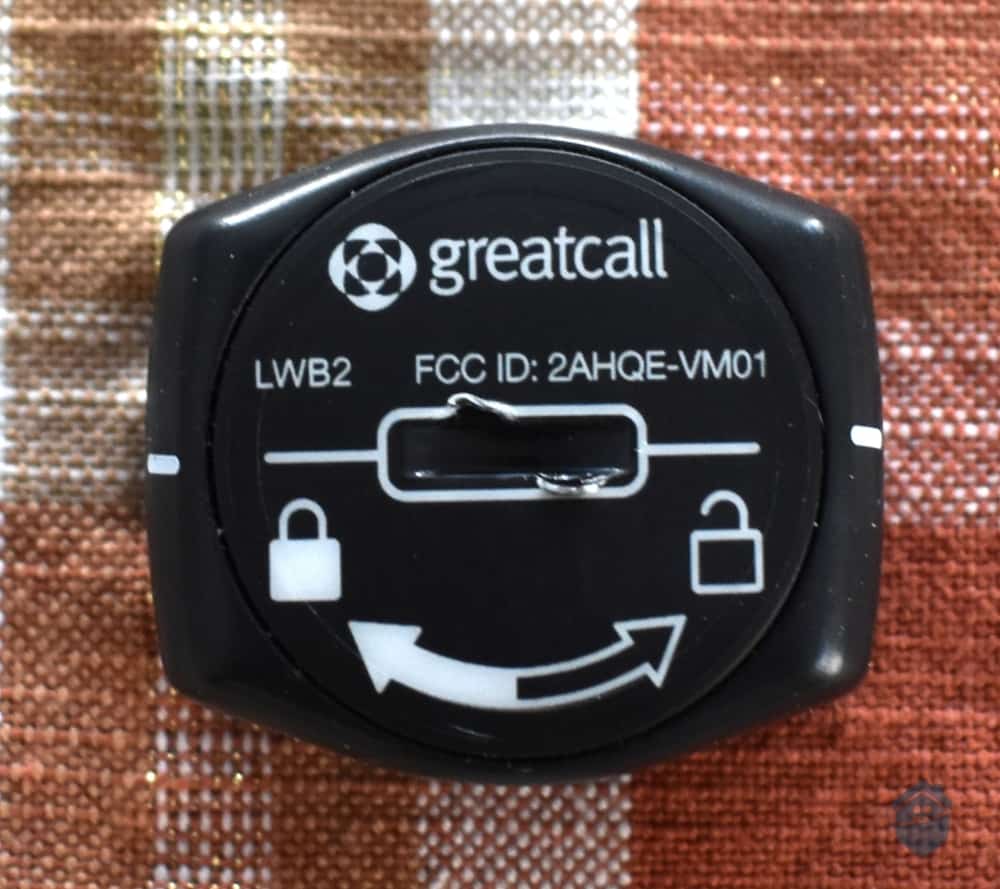
Lively Battery Case
On the other hand, the downside of the rechargeable battery is, well… remembering to recharge it. The rechargeable batteries that we’ve seen last anywhere from a single day (most common) to seven days or in a few cases up to 30 days. Often these systems supply an at-home wearable help button so that you will not go unprotected while the battery is charging.
If it doesn’t bother you to use multiple devices and you prefer a rechargeable battery, we recommend that you read our review of Medical Guardian. Though it will require remembering to charge the device (and remembering to wear the device after charging!), Medical Guardian provides a high-functioning mobile device both at home and while away.
In the end, it all comes down to personal preference.
Pro Tip: Clean and dry the device with warm water and a mild soap before replacing the battery on the Lively Wearable2. Also, note that the battery door has a special lubricant, so be sure not to wipe it off.
That’s it for our review of the Lively Wearable2’s features, but as mentioned earlier, it’s no longer in Lively’s rotation. Without it, Lively is down to three on-the-go medical alert systems – still plenty to choose from.
These three products are the Jitterbug Smart4, which is a smartphone, the Jitterbug Flip2, which is a basic phone, and the Lively Mobile Plus, which is a standalone pendant with built-in GPS and cellular connectivity.
You’re probably wondering how to choose the best option for you or your loved one, and the answer is simple. Just ask, “Am I (or the person I’m buying this for) comfortable using a smartphone?”
For seniors who are very comfortable using a smartphone, the Jitterbug Smart4 is the right device. This is an actual smartphone with some of the features we mentioned earlier (except fall detection) from our Wearable2 assessment. It requires no other device to work.
For folks who are somewhat comfortable with smartphones but are more used to phones with keypads, the Jitterbug Flip2 is the answer. This is a flip phone that has access to emergency response, but it misses out on features like app downloads and internet browsing, which we found a bit disappointing.
Lastly, for those who are not used to using smartphones at all, the wearable Lively Mobile Plus is the right solution. Unlike the Wearable2, which requires a smartphone to work, this is a standalone device. It has its own GPS, cellular connectivity, two-way talk, and an easy-access help button. It even has fall detection, which the phone options don’t provide.
If you want to learn more about their pricing, we’ve laid it all out for you in our Lively pricing guide.
Between the three devices currently available, Lively offers eight different subscription options – three for each the Smart4 and Flip2 and two for the Mobile Plus. The features you see here are included in the highest tier plans of each device.
| Jitterbug Smart4 | Jitterbug Flip2 | Lively Mobile Plus | |
|---|---|---|---|
| Type of Device | Smartphone | Flip Phone | All-in-One |
| Equipment Fee | $149.99 | $99.99 | $49.99 |
| Urgent Response | Included | Included | Included |
| Urgent Care | Included | Included | Included |
| Lively Link | Included | Included | Included |
| Brain Games | Included | Included | Not Available |
| Lively Rides | Included | Included | Not Available |
| Fall Detection | Not Available | Not Available | Included |
| Personal Operator | Included | Included | Not Available |
| Alexa Integration | Included | Included | Not Available |
| Built-In Camera | Included | Included | Not Available |
If you want to do even more comparisons on prices and features, read our industry-wide comparative guide, Best Medical Alert Systems.
In addition to those devices, Lively has added new ways to access help, and one of those ways is similar to the Wearable2 – the Apple Watch. For this setup, though, you’ll need an Apple Watch series 4 or newer and an iPhone. And much like the Wearable2, you can’t talk through the smartwatch with a live agent. Instead, you’ll need your iPhone for the two-way talk feature. That said, once setup, the Apple Watch will have a Lively emergency help button added to its interface.
The other option for even more tech-loving adults is Lively on Alexa, which as you might know, is Amazon’s voice assistant living inside its smart speakers and displays. With this, any Lively user can set up the Alexa skill and call for help with voice commands. Just say, “Alexa, call for help.”
We think these are nice additions to Lively features, and they certainly elevate the way it protects our loved ones. However, keep in mind that these are extras, and just as with any integration, the Apple Watch and Alexa integrations might not work all the time.
We found several reasons to love Lively, including its affordability.
And did we mention that the response time is under 19 seconds? (Our average time was actually 17 seconds.) This stellar time makes it one of the industry leaders for fast and reliable emergency monitoring.
We would be remiss if we did not mention the importance of the caregiver capabilities that Lively provides. The Lively Link app is a bonus — we especially like the location detection for caregivers.
FYI: Expect to see the emergence of more technology to assist busy family caregivers as older adults continue to age. Lively is one of only a few medical alert companies that, so far, are meeting that demand.
Speaking of caregiving, we recognize that just talking to aging loved ones about medical alert devices can be the first hurdle to jump. Some older adults have personal reasons for resisting medical alert devices. If you are a caregiver, picking a good time to talk about using a medical alert device is important. For example, discussing it immediately after an injury or accident, when emotions are running high, is probably not the best time.3
Picking a device that is the right fit is also important. Some older adults may be sensitive to what they perceive as a stigma; they don’t want to wear something that announces that they are vulnerable or ill. In these situations, a slick-looking smartphone or flip phone may be just the ticket.
Yet no system is perfect, and Lively has a few shortcomings. We think that for those who are at a high risk of falling, the Jitterbug phones might not be the best fit due to their lack of fall detection. On the other hand, the only device with fall detection, the Lively Mobile Plus, might be too bulky to wear.
Overall, though, we like what Lively offers through its apps and integrations. The Apple Watch and Alexa integrations are a nice touch, and they give users more ways to access help. If you appreciate those, Lively is a solid option.
You can find the CR2450 at most pharmacies and hardware stores. You can also purchase the battery online.
Urgent Care works in partnership with FoneMed, a private company that provides telehealth nursing services. Physicians are contracted through MDLive.
Lively Link can be downloaded, free of charge, from the Apple App Store or Google Play Store.
Lively reimburses purchases that are returned in “like new” condition, if returned within 30 days of the date of purchase. Refunds are provided on equipment fees, activation fees, and charges on the first month of service. Shipping fees are nonrefundable, and you will be charged a $10 restocking fee.
Yes, a one-year limited warranty comes with the purchase of your Lively Wearable2. Protection begins on the date of purchase.
The National Alliance for Caregiving. (2020, May). Caregiving in the U.S. 2020.
https://www.caregiving.org/caregiving-in-the-us-2020/
Journal of Geriatric Physical Therapy. (2015, October 1). Retrieved from National Center for Biotechnology Information. Fall Detection Devices and their Use with Older Adults: A Systematic Review.
https://www.ncbi.nlm.nih.gov/pmc/articles/PMC4087103/
Lively.com. (2021). Talking to Aging Parents About Medical Alert Systems.
https://www.lively.com/health-and-aging/talking-to-aging-parents-about-medical-alert-systems